Graham Reid | | 4 min read
Dropkick Murphys: Peg O' My Heart
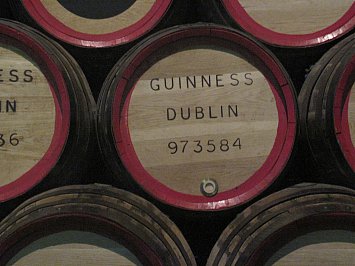
The
black and white image of the man on the small television screen looks
like something from a remote world of more than a century ago:
wearing a white shirt, braces to hold up wide flannel pants and heavy
work boots, he shaves timber slats into shape, arranges them
carefully and then hammers an iron hoop around them.
Against
the backdrop of a factory where steam wheezes from huge machinery,
the man labours with remarkable physicality, speed and skill.
He
is Dick Flanagan who was a cooper, and here at the famous Guinness
Storehouse in Dublin’s St James’ Gate Brewery -- home to the
company which this year is celebrating its 250th
anniversary -- he plied his craft. But these ancient-looking images
came from as recently as 1954 when Guinness was still keeping their
liquid black gold in wooden casks.
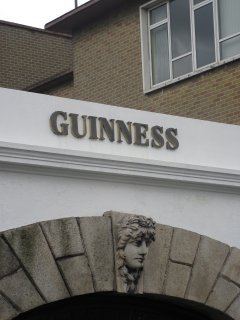 At
one time there were 300 coopers working fulltime making casks for
Guinness and the storehouse complex contained over quarter of a
million of them, all made by hand where the craftsman’s eye was the
measure.
At
one time there were 300 coopers working fulltime making casks for
Guinness and the storehouse complex contained over quarter of a
million of them, all made by hand where the craftsman’s eye was the
measure.
To
watch Flanagan is captivating: he shapes slats with a small adze-like
chisel, pulls them together so they are airtight and then moves on to
making, then hammering down, the iron bands. Then, for the first time
using any measuring gear, he takes a ruler to size timber for the
tops and bottoms which fit snugly.
On
a day when a Guinness awaits in the Gravity Bar on the top floor of
the Storehouse -- the seven-storey building in the shape of a glass
of Guinness with the bar as its head -- no one on the self-guided
walk through the brewing process seems to be in any hurry.
Flanagan
finishes his cask and the film loops to begin again, mirroring
exactly what his working day was for decades.
A
visit to the Guinness factory is a highlight of any trip to Dublin
because if nothing else, and there is plenty of the “else” for
your interest, you get a spectacular 360 degree view over the city
from the Gravity Bar as you sup a pint which comes with the price of
your admission.
The
Guinness story is a fable of good fortune and canny business smarts:
Arthur Guinness (1725-1803) signed the lease on the abandoned St
James’s Gate Brewery on 31 December 1759. It was for 9000 years at
an annual rent of 45 pounds: a copy of this remarkable document is
embedded in the ground floor of the Storehouse.
Within
a decade he was exporting his ale, in 1770 he began developing a
higher quality “porter“ (the forerunner to Guinness), and by 1799
he had stopped making traditional beer. His expanding brewery was
solely dedicated to his refined “porter”, known now across the
world simply as Guinness.
As
with any decent whisky distillery, Guinness claims one of its key
ingredients is the special water it uses which is not, as rumour has
it, taken from the River Liffey but comes down (eight million litres
a day of it) from the nearby Wicklow Mountains. To the other
ingredients -- barley, hops and yeast -- was added the most
important: Arthur Guinness, the son of a brewer and a man who knew
how to market his product.
His
canny know-how is a trait the family carried on and in the Storehouse
is a large area dedicated to the clever advertising campaigns
Guinness has run, and the memorable advertising imagery (toucans,
ostriches, surfers) from the pen of graphic artist John Gilroy who
created the Guinness marque for three decades from the 30s.
Gilroy,
who created the famous “Guinness is good for you” poster among
many others, was also a gifted portrait painter who subjects included
Sir Winston Churchill, Sir John Gielgud and the Queen, whom he
painted when he was 82.
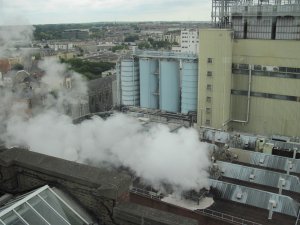
Today
10 million glasses of Guinness are drunk daily in places as far apart
as India and Indiana. It is brewed in more than 40 countries and sold
in over 150.
The
Storehouse is billed as the number one tourist attraction for
international visitors in Ireland and is an easy 20 minute walk from
the central city, and a stop on the hop on-hop off bus tours.
The
view of the city -- with landmarks identified -- from the Gravity Bar
is worth the visit alone, made more pleasurable by a glass of
Guinness.
But
while the Gilroy posters will attract the eye and hops assail the
sense of smell, for many visitors crowding around the screens, the
sight of Dick Flanagan, a master craftsman in a trade which has
almost been lost, will remain an abiding memory.


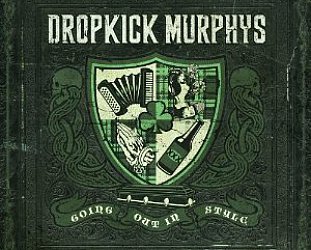

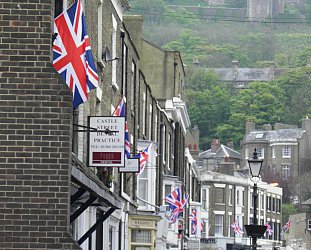

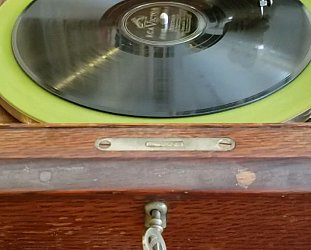
post a comment